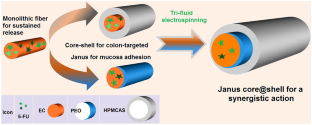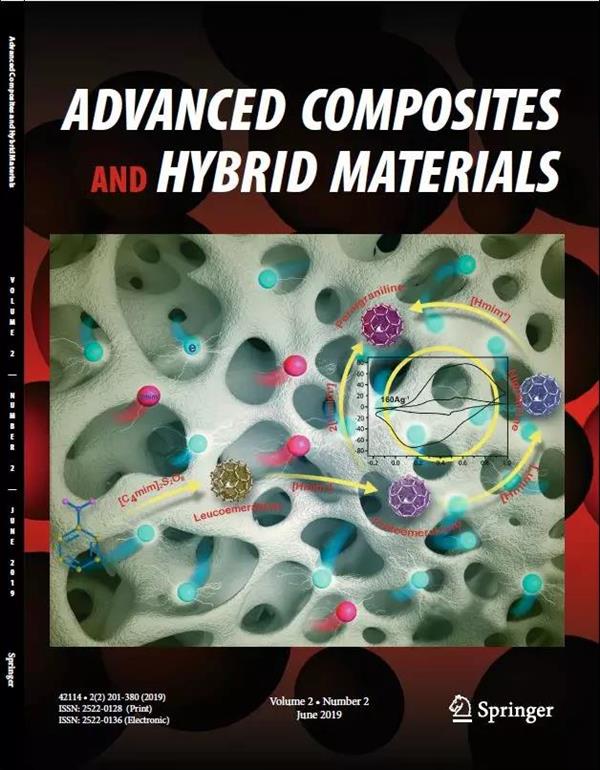Electrospun Janus core (ethyl cellulose//polyethylene oxide) @ shell (hydroxypropyl methyl cellulose acetate succinate) hybrids for an enhanced colon-targeted prolonged drug absorbance
Abstract
Structural polymeric nanohybrids is presently a popular topic and can be conceived for numerous functional applications, including the pH-sensitive oral colon-targeted drug-delivery system. In this paper, a brand-new Janus core@shell (JCS) nanostructure was fabricated using a trifluid electrospinning, in which three polymers and a model drug 5-fluorouracil (5-FU) were elaborately and intentionally positioned. In the structural hybrids, the pH-sensitive polymer hydroxypropyl methyl cellulose acetate succinate was located in the common shell layer, and the 5-FU-loaded ethyl cellulose (EC) and polyethylene oxide (PEO) were organized in a side-by-side manner in the core sections. The JCS fiber had a fine linear morphology with a multiple-chamber structure and a shell thickness of about 24 nm. The drug presented in the fibers in an amorphous state, owing to the secondary intermolecular interactions between EC and 5-FU. The ex vivo adhesion experiments suggested that the JCS fibers could stick firmly to the intestine membranes. In vitro dissolution tests showed the JCS fibers released only 7.8% ± 3.5% of the loaded 5-FU in an acid condition. In vivo gavage administration verified that the JCS fibers effectively promoted the absorbance of 5-FU in a synergistic manner, better than the double-layer core–shell and Janus nanofibers, and near fourfold than the drug solutions as a control. The present protocol opens a new way for developing novel multifunctional nanomaterials with the JCS nanostructure as a powerful supporting platform.
Graphical abstract


 求助内容:
求助内容: 应助结果提醒方式:
应助结果提醒方式:


